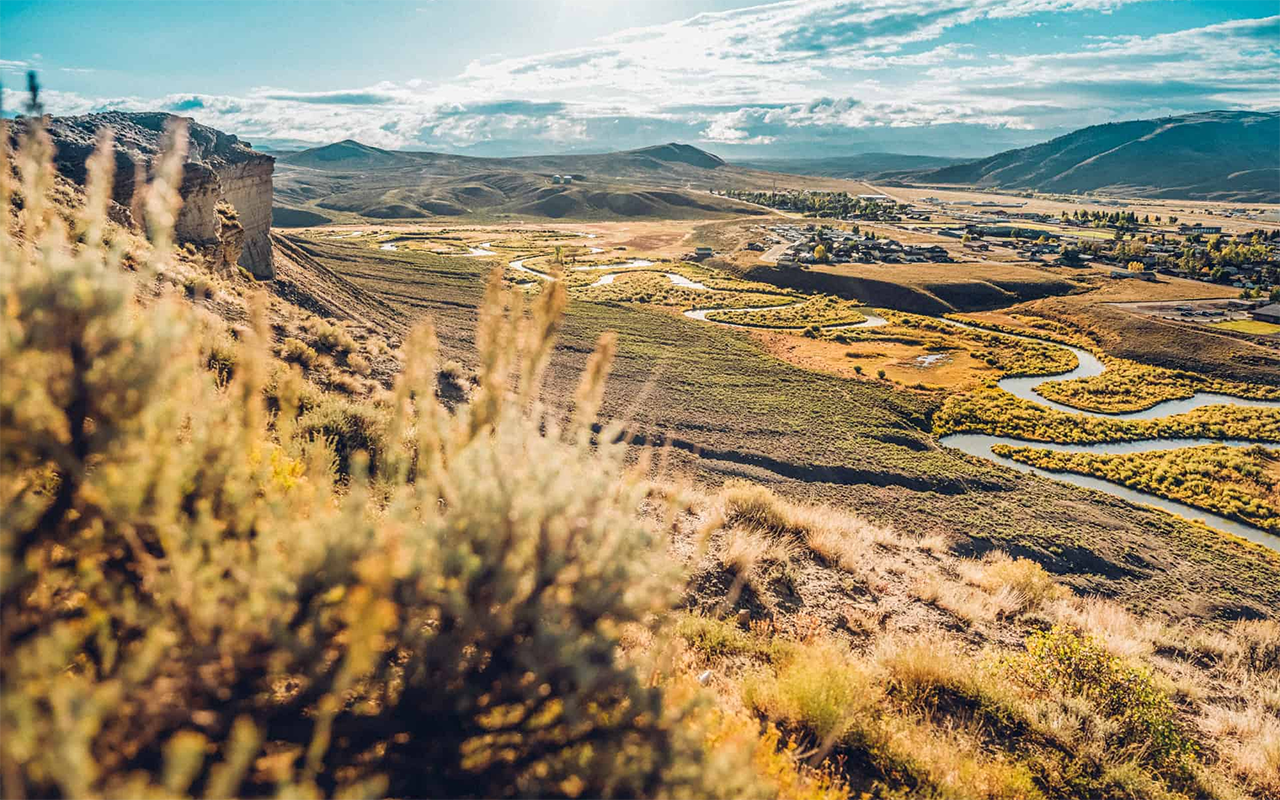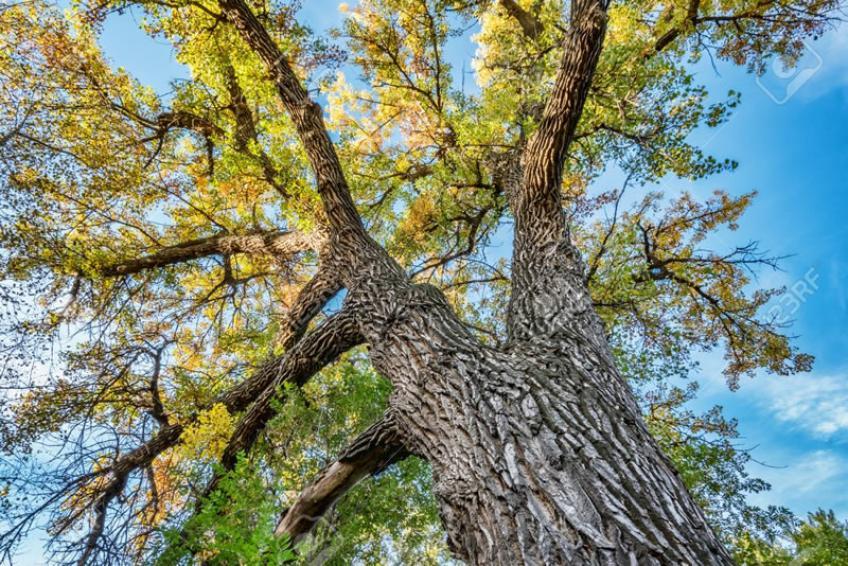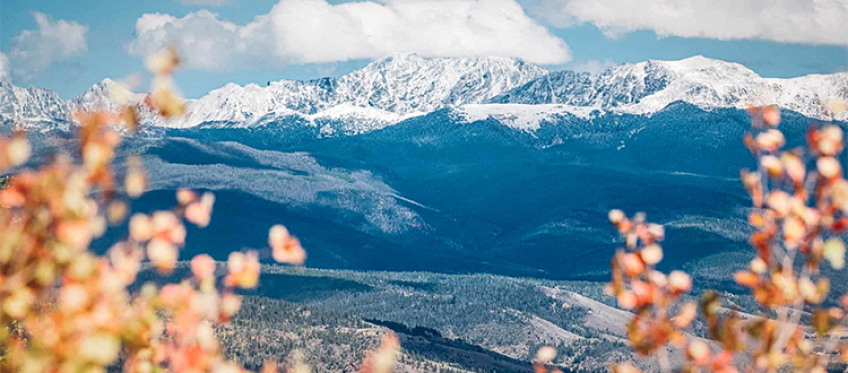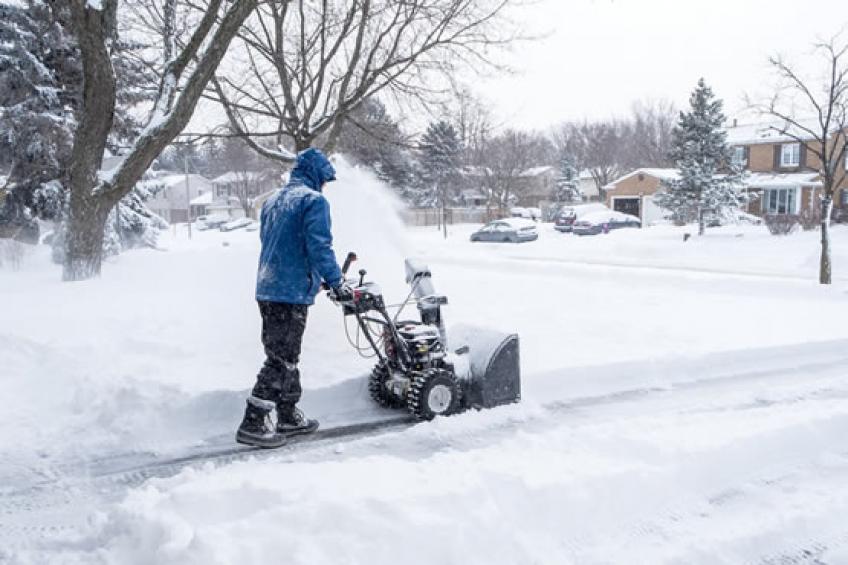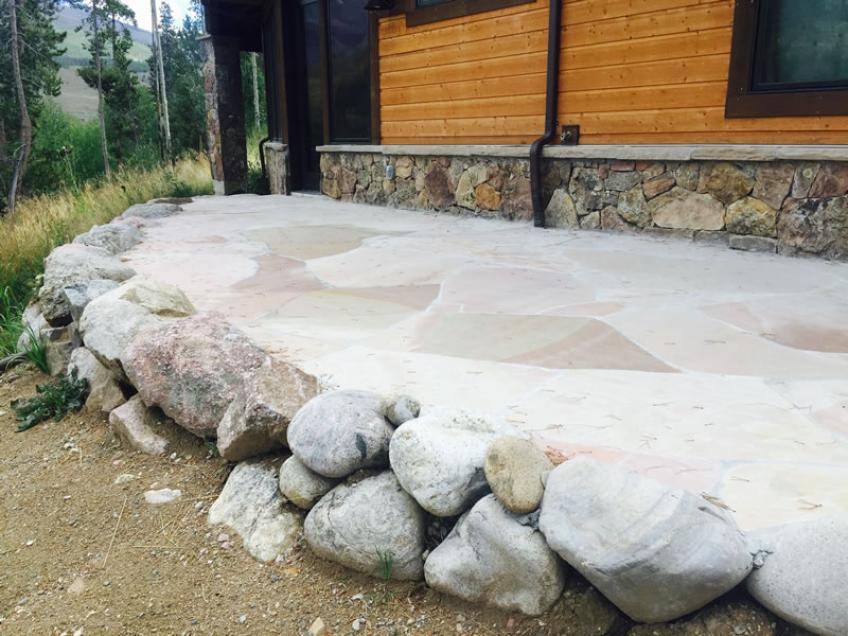Select trees and shrubs for xeric landscapes based on both adaptation to Colorado’s climate and the ability to prosper in reduced water situations.
Assess site soil, drainage and exposure before selecting trees and shrubs.
Apply adequate water during the first years of plant establishment, then gradually reduce irrigation.
Woody plants are a long-term investment.
Plants that will prosper in Colorado’s climate without benefit of ample irrigation require careful selection. This is especially true of woody trees and shrubs that are more expensive investments than herbaceous plants, both in terms of money and time to grow.
As a long-term investment, select and plant trees and shrubs only after careful evaluation of the site’s soil, drainage and exposure to heat and wind. While some xeric plants tolerate reduced water, they may not function well in soils low in oxygen. Many of the state’s dense clay soils have minimal room to accommodate enough water and oxygen to meet plant root needs. Preparing soils by adding organic amendments prior to planting can often overcome water-oxygen concerns during initial establishment. Reduced water using trees and shrubs are best planted in areas separate from lawns, unless lawns are also a reduced water use type. Regardless of how durable woody plants are for survival in xeric conditions, many plants need at least two growing seasons to establish. Water during establishment, then gradually reduce irrigation.
Adequate soil drainage plays an important role in preventing soils from water logging, which leaves no room for oxygen. Conduct a subsoil drainage test by digging an 18 x 18-inch hole, filling it with water and timing how long it takes to drain. Water that stands in the hole for more than 30 minutes indicates poor drainage. If amending the soil doesn’t solve drainage problems, drain tile or planting on berms (mounds) of well-drained soil brought to the site may be other solutions. Build berms to a minimum height of 24 inches.
Some trees and shrubs may perform poorly in hot south or windy west exposures and are better sited in cooler east or north exposure.
The following list of durable trees and shrubs will prosper in reduced water situations. For more specifics, check with your local extension office for the best plants for your area and microclimate.
To see list click on link:
http://extension.colostate.edu/topic-areas/yard-garden/xeriscaping-trees...
Xeriscaping (zer-i-skaping) is a word originally coined by a special task force of the Denver Water Department, Associated Landscape Contractors of Colorado and Colorado State University to describe landscaping with water conservation as a major objective. The derivation of the word is from the Greek “xeros,” meaning dry, and landscaping — thus, xeriscaping.
The need for landscaping to conserve water received new impetus following the drought of 1977 throughout the western states and the recognition that nearly 50 percent of the water used by the average household is for turfgrass and landscape plantings.
Unfortunately, many homeowners have cut back on turfgrass areas by substituting vast “seas of gravel and plastic” as their answer to water conservation. This practice is not only self-defeating as far as water conservation is concerned, it also produces damaging effects to trees and shrubs. It is not xeriscaping.
Planning — An Important First Step
Whether you want to redesign an old landscape or start fresh with a new one, a plan is a must. The plan does not have to be elaborate but should take into consideration the exposures on the site. As a rule, south and west exposures result in the greatest water losses, especially areas near buildings or paved surfaces. You can save water in these locations simply by changing to plants adapted to reduced water use. However, don’t be too quick to rip out the sod and substitute plastic and gravel. Extensive use of rock on south and west exposures can raise temperatures near the house and result in wasteful water runoff.
Slope of Property
Slope or grade is another consideration. Steep slopes, especially those on south and west exposures, waste water through runoff and rapid water evaporation. A drought-resistant ground cover can slow water loss and shade the soil. See fact sheet 7.230, Xeriscaping: Ground Cover Plants, for suggested ground covers. Strategically placed trees also can shade a severe exposure, creating cooler soil with less evaporation. Terracing slopes helps save water by slowing runoff and permitting more water to soak in.
Reduce Irrigated Turf
Avoid narrow strips of turf, hard to maintain corners, and isolated islands of grass that need special attention. Not only is maintenance more costly, but watering becomes difficult, often wasteful. If your yard is already landscaped, see 7.234, Xeriscaping: Retrofit Your Yard, for information on ways to evaluate and eliminate unneeded turfgrass areas.
Bluegrass turf can be reduced to areas near the house or that get high use. In outlying areas, use more drought-resistant grasses or even meadow mixes containing wildflowers, particularly if your property is large. Refer to 7.232, Xeriscaping: Turf and Ornamental Grasses, for suggested alternatives to bluegrass.
Soil Preparation
Proper soil preparation is the key to successful water conservation. If the soil is very sandy, water and valuable nutrients will be lost due to leaching below the root zone. If your soil is heavy clay, common in this area, you will lose water through runoff.
A good soil, one that supports healthy plant life and conserves moisture, has a balance of rather coarse soil clusters (aggregates), sand and pore spaces. The “ideal” soil has as much as 50 percent by volume pore space, with the soil itself consisting of a good balance of sand, silt and clay.
A major problem with heavy soils is that clay tends to dominate the soil complex. Clay is composed of microscopic crystals arranged in flat plates. When a soil has a high number of these crystals, they act much like a glue, cementing the particles of sand and silt together and resulting in a compact, almost airless soil.
Such soils usually repel surface water, resulting in runoff. What water does get into these soils is held so tightly by the clay itself that plants cannot use it. Plants in a clay soil, even though it is moist, often wilt from lack of moisture. Plant roots also need air to thrive. In clay soils, air spaces are small and may be filled with water, so plant roots often suffer from oxygen starvation.
In very sandy soils, the opposite is true. Sandy soils have very large pore spaces. Because the particles are large, there is little surface area to hold the water, so sandy soils tend to lose water rapidly.
A good soil is not made in just one year. Add organic matter annually to garden areas. In areas to be sodded or seeded, add organic amendments as a one-time procedure. Take advantage of this one time before seeding or sodding by doing a thorough, complete job. This encourages deep roots that tap the water stored in the soil and reduces the need for wasteful, frequent water applications.
Xerigation — Saving Water with Proper Irrigation
Proper irrigation practices can lead to a 30 to 80 percent water savings around the home grounds. If a sprinkler system is already installed, check it for overall coverage. If areas are not properly covered or water is falling on driveways and patios, adjust the system. This may mean replacing heads, adding more heads, or changing heads to do a more efficient job.
With the system on, observe places that are receiving water where it is not needed. Overlaps onto paved areas or into shrub borders may result in considerable water waste. Overwatering trees and shrubs may lead to other problems.
Irrigate turf areas differently than shrub borders and flower beds. North and east exposures need less frequent watering than south and west exposures. Apply water to slopes more slowly than to flat surfaces. Examine these closely and correct inefficiencies in irrigation system design.
If you do not have a sprinkler system and are just beginning to install a landscape, you can avoid the pitfalls of poorly designed and installed systems. Have a professional irrigation company do the job correctly. Make sure the system is designed to fit the landscape and the water needs of the plants and that it is zoned to reduce unnecessary applications of water. Coordinate the landscape design itself, selection of plants and the irrigation system to result in a sensible water-saving scheme.
Consider a drip system for outlying shrub borders and raised planters, around trees and shrubs, and in narrow strips where conventional above-ground systems would result in water waste.
If you use hoses instead of an underground system, you can observe water patterns. Instead of watering the entire lawn each time, spot water based on visible signs of need, such as turf that begins to turn a gray-green color.
Avoid frequent, shallow sprinklings that lead to shallow root development. Compact soils result in quick puddling and water runoff. They need aeration with machines that pull soil plugs.
Trees and shrubs separate from the lawn are best watered with deep root watering devices.
Xerimulch the Landscape
Properly selected and applied mulches in flower and shrub beds reduce water use by decreasing soil temperatures and the amount of soil exposed to wind. Mulches also discourage weeds and can improve soil conditions.
There are two basic types of mulches: organic and inorganic. Organic mulches include straw, partially decomposed compost, wood chips, bark, and even ground corncobs or newspapers. Inorganic mulches include plastic film, gravel and woven fabrics. Sometimes a combination of both organic and inorganic is used.
If soil improvement is a priority, use organic mulches. Wood chips and compost are most appropriate. As these materials break down, they become an organic amendment to the soil. Earthworms and other soil organisms help incorporate the organic component into the soil. Organic mulch is preferred because most soils in this area are low in organic content and need organic amendments to improve aeration and water-holding capacity.
Inorganic mulches, such as plastic film, effectively exclude weeds for a time, but they also tend to exclude the water and air essential to plant roots. Woven fabrics and fiber mats are preferred over polyethylene films. Fabrics and mats exclude weeds yet allow water and air exchange. Used in combination with decorative rock or bark chunks, they often outlast the less expensive but short-lived polyethylene films.
